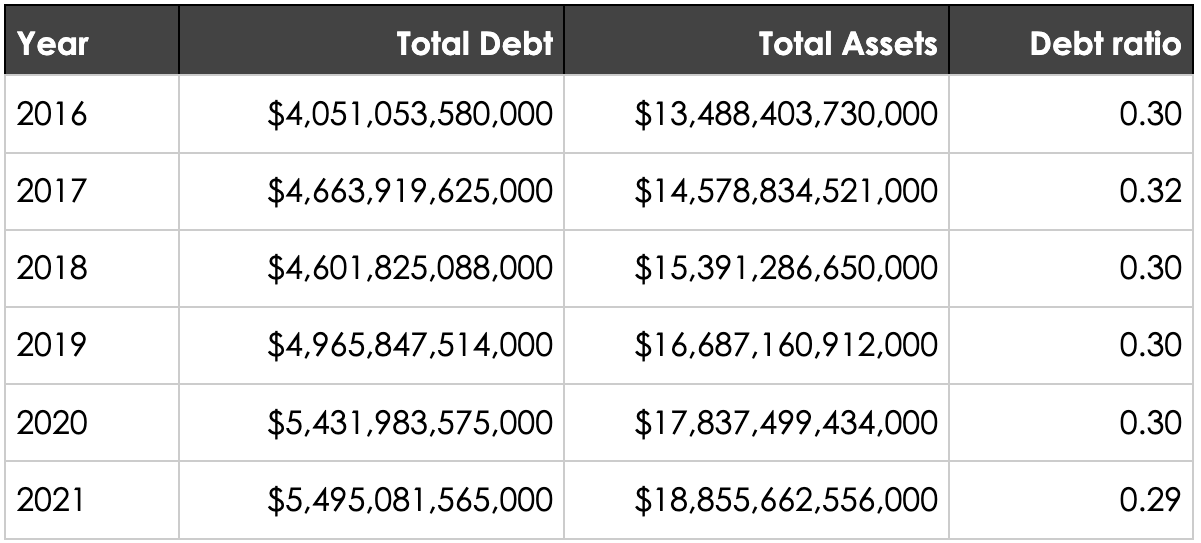Our special report on corporate debt continues today with a broader look at the disclosures companies make. That is, aside from specific disclosures about debt instruments, maturity dates, and interest payments; what else can financial analysts look at to evaluate a company’s position?
One disclosure to consider is the company’s debt ratio, defined as total debts divided into total assets. The larger that number, the more indebted a company is.
For example, the average debt ratio for non-financial S&P 500 companies in 2021 was 0.33 — but individual companies’ ratios varied widely, from Domino’s Pizza ($DPZ) at 3.03 and Yum Brands ($YUM) at 1.89, down to dozens of companies with a ratio of zero because they reported no debt at all.
Collectively, the debt ratio for non-financial companies has held remarkably steady in recent years. We looked at a total of 410 non-financial firms, and Table 1, below, shows the collective debt ratio from 2016 through 2021.

Again, however, the change in debt ratio for individual firms varied quite widely. For example, crafting e-tailer Etsy Inc. ($ETSY) saw its debt ratio jump from 0.12 in 2016 to 0.59 in 2021. That was an upward delta of 0.47, the largest jump in our sample group in absolute terms, and a percentage increase of 397 percent.
So what happened at Etsy? We used our Company-in-Detail page to compare its 2016 and 2021 balance sheets. Total assets rose a respectable 560 percent, from $581.2 million to $3.83 billion — but total liabilities ballooned by more than tenfold in the same period to $3.2 billion, and much of that increase was driven by $2.2 billion in long-term debt that Etsy acquired somewhere along the way.
Now circle back to the question we raised at the beginning of this debt series. If Etsy scooped up $2.2 billion in long-term debt recently, while interest rates were low, how might its financial picture change if Etsy needs to refinance that debt at higher rates? What portions of that debt will come due in what years? What interest rates has Etsy been paying so far, and what rates is it likely to encounter when refinancing comes around?
Those are all questions that financial analysts can research on Calcbench, for Etsy or any other company; we’ll show you how in our next post. Once you have that context, you can then ask the CFOs of companies you follow questions that are more precise, and hopefully get answers more comprehensive.